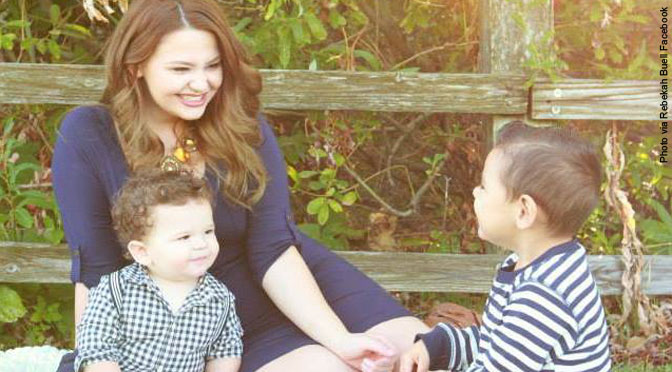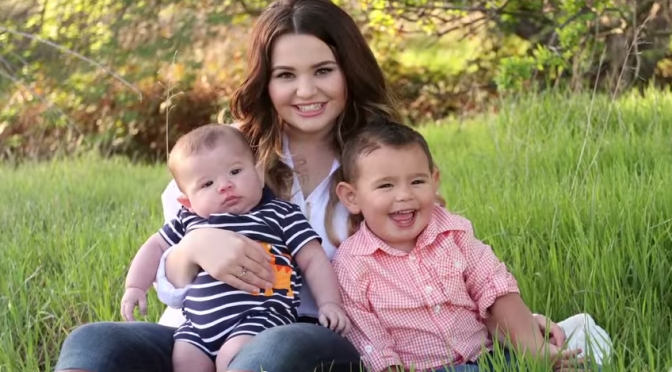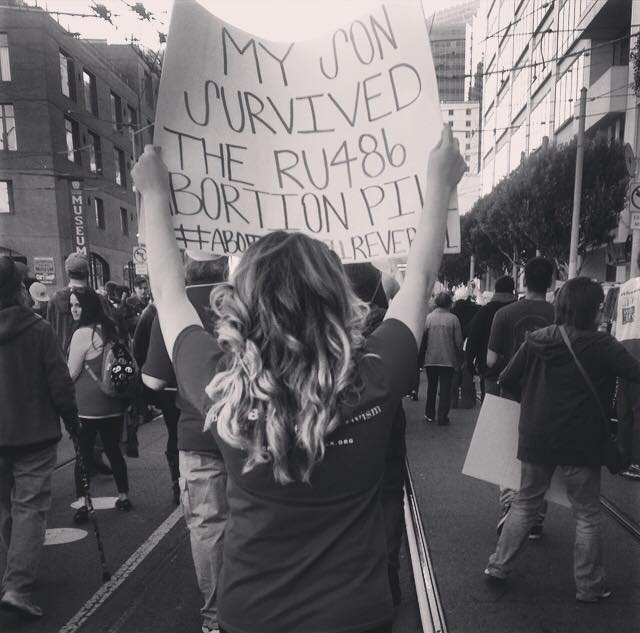Rebekah Buell got pregnant and gave birth to her son Elias when she was a 17-year-old high school student. After leaving an abusive marriage and moving back in with her parents, Rebekah realized that she was pregnant again. Scared for herself and Elias, she began to consider abortion. She visited a Planned Parenthood, where she decided to undergo a medication abortion.
But almost immediately after taking the first abortion pill, Rebekah desperately regretted her decision. She decided to take her chances with an abortion reversal. The reversal was successful, and Rebekah, now 23, has another son, a healthy three-year-old boy named Zechariah. She has since become an outspoken advocate for abortion reversal, and the abortion industry is not happy about it.
Rebekah’s Story and Planned Parenthood’s Reaction
In sharing her experience, Rebekah explains that she took the first of the abortion pills in the Planned Parenthood clinic and then walked to her car with her second dose, to be taken later. Yet she soon knew she couldn’t go through with it. “As soon as I got to my car I knew it wasn’t the right decision,” she explained. “Everything just hit me. … I just felt like, ‘I can’t believe I just did that.'” Right there, in Planned Parenthood’s parking lot, Rebekah began searching online for abortion reversal, and she eventually came across AbortionPillReversal.com. She called the hotline number on the website, 1-877-558-0333 (staffed 24/7 with nurses), and was referred to a doctor, who was willing to help her try to save her baby.
Planned Parenthood was not the least bit supportive of Rebekah’s choice to attempt to reverse her abortion. The office staff called her several times, wanting to know why she had not returned for her follow-up appointment to ensure that the abortion was completed. Follow-up is understandable, but when Rebekah explained that she had changed her mind, she said that the staffers were furious. They told her it was pointless to try to save her baby, and that if he did survive, he would be deformed. Planned Parenthood put pressure on Rebekah to finish the abortion of her son.
“It wasn’t like I owed them any money and yet they were so angry,” Rebekah said. “I don’t know if they were so misinformed or if they were just lying.” As other parents have discovered, this is a common reaction from Planned Parenthood when mothers choose abortion reversal, or even when they simply want information about it.
Zechariah is not deformed, and Rebekah does not regret her decision to save his life. Even the American College of Obstetricians and Gynecologists have directly stated that there is no evidence that taking the first abortion pill (mifepristone) will result in deformities. Additionally, there is no evidence that progesterone — the treatment generally used to reverse abortion — causes deformities either. Progesterone has a record of being safely and successfully used during pregnancy to prevent and stop miscarriage, and has been used in infertility treatments for decades.
Rebekah shares that her decision to have an abortion was one made out of fear and desperation after leaving an abusive relationship. Yet, she says that the desperation after starting an abortion was even worse: “I’ve never felt more desperate and hurt than I did after taking that pill,” she said. “There was no other feeling, no worse of a situation I could have been in right then and there, thinking I’d made the biggest mistake of my life.”
A Short History of Abortion Reversal
The abortion reversal treatment was pioneered by Dr. George Delgado, and it works by giving the mother progesterone shots to counteract the mifepristone pill. Delgado explained to The Sacramento Bee that the option of abortion reversal gives women more choices. “Women who take mifepristone sometimes change their minds,” Delgado said. “If they change their minds, they have the right to a second chance at choice.”
But the abortion industry does not support this option for women to have more choices — despite labeling themselves as “pro-choice.” Jessica Dieseldorff, a nurse practitioner at Planned Parenthood, said that recommending the treatment to patients who regretted their decision would be “unethical.” “There’s just not enough information to know if it made a difference,” she said. “There isn’t evidence showing it’s safe or effective. I wouldn’t consider it to be very ethical to be offering patients treatments that don’t have an evidence base.” Amy Everitt, state director of NARAL Pro-Choice California, went even further, saying it was just another way to shame women.
“(Reversal therapy) is another vehicle for putting pressure and shame on women,” Everitt said. “What you’re saying is ‘You probably haven’t thought about this enough, so there’s an option halfway through to rethink.’ That disrespects women’s decision-making processes.” But for an organization that bills itself as “pro-choice”, the idea that giving women more options would somehow be wrong shows that this isn’t about science or evidence — it’s about ideology. “I don’t know why there’s controversy and criticism,” Delgado said. “It seems like a no-brainer. If these women change their minds, they should know that this exists.”
And while pro-abortion advocates have long been claiming that abortion reversal is “quackery,” and not well studied, the success of Delgado’s treatment, used by hundreds of doctors, proves them wrong. Delgado estimates that he has a success rate of between 60% and 70%, with a team of over 270 doctors around the world willing to help women who have changed their minds.
The Science of Abortion Reversal
But what about the science? A common argument from pro-abortion advocates is that if women just didn’t take the second dosage — the misoprostol — the abortion wouldn’t be completed anyway. But Karen Poehailos, a doctor who has successfully completed an abortion reversal, explains that this is not accurate.
First, it’s important to know how the pill method for abortion works. The mifepristone blocks progesterone, which causes the placenta to break down, starving the baby of blood and nutrients. The second pill, the misoprostol, is taken 24-48 hours later to induce contractions, so the woman expels the body of her child. For Poehailos’ patient, the mifepristone was already beginning to take effect. “The first ultrasound showed an area of hemorrhage inside the placenta, and she did have some bleeding, but the ultrasound showed the baby was alive,” she explained. “Over the next couple of shots through the next couple of days, that area disappeared. The progesterone was able to counteract the mifepristone and allow the placenta to heal itself. I think if we hadn’t given her that… well, she may not have completed the abortion on her own, but she was bleeding and the placenta was breaking down, and we saw it on the ultrasound. It wasn’t medical theater; it was reality.”
Abortion reversal has science behind it, and it gives women more choices. There should be no reason for so-called “pro-choice” advocates like NARAL and Planned Parenthood to fight it… except that these are not organization who want real choices for women. They want abortions for women. If it was really about choice, they would be cheering abortion reversal as a viable option for women who change their mind.
For her part, Buell will not stop talking about her experience. She will continue to advocate abortion reversal as an option for all women. “It’s so important for me to speak out,” she said. “For women to know they’re not alone, that they’re not crazy for making a decision of fear and then changing their mind.”









